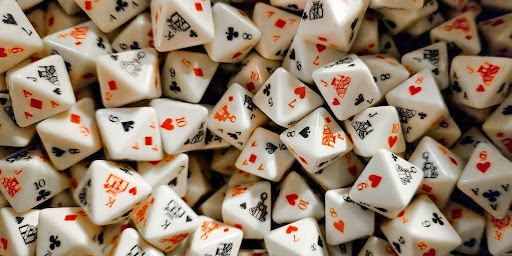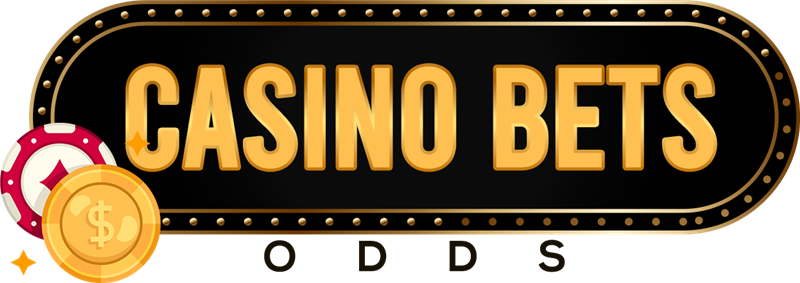Thinking about trying your luck at the casino? The crisscross casino game, also known as Criss Cross Poker, is a popular choice for many players. It’s a card game that combines elements of poker with a unique betting structure. Unlike traditional poker, where you play against other people, in this game, you’re playing against the house, aiming to make the best possible poker hands from the cards dealt. This guide will break down the game, offer some tips, and help you understand the strategies that can improve your chances of winning at the crisscross casino game.
Key Takeaways
- Criss Cross Poker is a casino card game where players aim to form poker hands against a paytable, rather than competing against other players.
- The game involves making two ante bets and potentially a bonus bet, with community cards dealt in a cross shape.
- Players decide whether to fold or increase their bets as more community cards are revealed.
- Understanding hand rankings and the odds associated with various payouts is crucial for playing strategically.
- Managing your bets and avoiding common mistakes can help make the crisscross casino game more enjoyable and potentially more profitable.
What Is Criss Cross Poker? An Introduction to the Game

Criss Cross Poker is a casino card game that offers a unique twist on traditional poker. Unlike many other casino games where you play against the dealer, in Criss Cross Poker, you’re essentially playing against a pay table, aiming to form the best possible poker hands. It’s a five-card stud game, meaning you’re dealt five cards, and the goal is to achieve a hand ranking of at least a pair of sixes. This game is a great option for players who enjoy poker strategy but prefer a more structured and predictable game flow. It’s a popular choice in many casinos, offering a different kind of challenge compared to games like Blackjack.
The Basic Setup
The game uses a standard 52-card deck. Players start by making two ante wagers of equal value: an “Ante Across” bet and an “Ante Down” bet. There’s also an optional “5 Card Bonus Bet” that can add an extra layer of excitement and potential payouts.
How the Cards are Dealt
Five community cards are dealt face down in a cross shape. Each player then receives two cards face down. You’ll get to look at your cards, which is where the initial strategy comes into play. After this, the dealer reveals some of the community cards, and you’ll have opportunities to make additional bets based on the developing hands.
Forming Your Hands
Your two personal cards are combined with three of the community cards to form two distinct poker hands: an “Across” hand and a “Down” hand. The “Across” hand uses the two cards you hold plus the three community cards arranged horizontally in a cross. The “Down” hand uses your two cards plus the three community cards arranged vertically. The payouts for these hands are determined by a specific pay table, which rewards higher-ranking poker hands with bigger payouts.
The game’s structure, with its distinct “Across” and “Down” hands, requires players to think about how their two cards can contribute to two separate winning combinations. This dual-hand aspect is what makes Criss Cross Poker particularly engaging.
Payouts and Winning
Winning bets are paid according to the pay table. The “Middle Bet,” which is an additional wager you can make during the game, is paid if either your “Across” or “Down” hand qualifies as a win, with the payout based on the higher-ranking hand. The two ante bets typically pay even money for a pair of Jacks or better, and push (no win or loss) for pairs of sixes through tens. The optional 5 Card Bonus bet is based on the best five-card poker hand formed by the five community cards alone.
Criss Cross Poker Rules: Understanding the Basics
Criss Cross Poker is a unique casino game that blends elements of poker with a distinct betting structure. Unlike traditional poker, where you play against other players, in Criss Cross, you’re competing against the dealer’s pay table. The objective is to form the best possible poker hands using your two private cards and the five community cards dealt in a cross formation. The game uses a standard 52-card deck.
Initial Wagers
Before any cards are dealt, you’ll need to place two ante bets of equal value: the “Ante Across” and the “Ante Down.” You also have the option to make a “5 Card Bonus Bet,” which is a side bet based on the five community cards.
The Deal
Five community cards are dealt face down, arranged to form a cross shape. You then receive two cards face down, which you can look at privately. The dealer will then reveal two of the community cards on the horizontal line of the cross.
Player Decisions and Further Betting
After the first two community cards are revealed, you have a choice: you can either fold your hand or make an “Across Bet.” This bet can range from one to three times your “Ante Across” wager. Following this, the dealer reveals the two community cards on the vertical line of the cross. Again, you can choose to fold or make a “Down Bet,” which can be one to three times your “Ante Down” wager.
The Middle Bet and Final Reveal
Next, the dealer offers a “Middle Bet” option. This bet can be one to three times your original ante bets. You can choose to fold or place this bet. Finally, the dealer reveals the center card of the cross. This completes the community cards.
Forming Your Hands
Your “Across” hand is formed using your two private cards combined with the three community cards on the horizontal line. Your “Down” hand is formed using your two private cards along with the three community cards on the vertical line. The dealer then reveals their hand, if applicable, and compares it to the pay table.
Payouts
Winning “Across” and “Down” bets are paid according to the game’s specific pay table. The “Middle” bet pays if either your “Across” or “Down” hand qualifies as a win, with the payout determined by the higher-ranking hand. The two ante bets typically pay even money for a pair of Jacks or better, and push (return your bet) for a pair of 6s through 10s. The 5 Card Bonus bet pays based on the best five-card poker hand formed by the five community cards, also according to its pay table. Understanding these poker hand rankings is key to playing effectively.
Hand Rankings and Payout Examples
Here’s a look at typical payouts for the main bets:
| Hand Ranking | Ante/Play Bet (1:1) | Across/Down Bet (Example) |
| Royal Flush | N/A | 500 to 1 |
| Straight Flush | N/A | 100 to 1 |
| Four of a Kind | N/A | 40 to 1 |
| Full House | N/A | 12 to 1 |
| Flush | N/A | 8 to 1 |
| Straight | N/A | 5 to 1 |
| Three of a Kind | N/A | 3 to 1 |
| Two Pair | N/A | 2 to 1 |
| Pair of Jacks+ | 1 to 1 | N/A |
| Pair of 6s-10s | Push | N/A |
And for the 5 Card Bonus Bet:
| Hand Ranking | 5 Card Bonus Bet (Example) |
| Royal Flush | 250 to 1 |
| Straight Flush | 100 to 1 |
| Four of a Kind | 40 to 1 |
| Full House | 15 to 1 |
| Flush | 10 to 1 |
| Straight | 6 to 1 |
| Three of a Kind | 4 to 1 |
| Two Pair | 3 to 1 |
| Pair of 6s or Better | 1 to 1 |
It’s important to remember that the specific payouts can vary slightly between casinos, so always check the pay table at the table you’re playing at before you start.
Key Rules to Remember
- You must make two equal ante bets to start.
- You have multiple opportunities to fold or bet as the community cards are revealed.
- Your final hands are formed using your two cards plus three community cards from either the horizontal or vertical lines.
- The 5 Card Bonus bet is independent of your main hands and is based solely on the community cards.
Criss Cross Poker Strategy: When to Raise or Fold
Deciding when to raise or fold in Criss Cross Poker is all about evaluating your potential hands against the community cards and the dealer’s revealed cards. It’s not just about having a good hand yourself; it’s about how that hand stacks up. You’ve got two main hands to consider: the ‘Across’ hand and the ‘Down’ hand, both using your two private cards and three community cards.
Evaluating Your ‘Across’ Hand
When the dealer reveals the two outside cards on the horizontal line, you can start assessing your ‘Across’ hand. If these two cards, combined with your own two, give you a strong possibility of making a good poker hand (like a pair of Jacks or better, or even a straight or flush), you’ll want to consider raising your ‘Ante Across’ bet. A strong ‘Across’ hand is your primary ticket to winning that bet. If the cards don’t look promising, folding is often the smarter move to save your wager.
Assessing Your ‘Down’ Hand
Similarly, after the dealer shows the two outside cards on the vertical line, you’ll evaluate your ‘Down’ hand. This involves your two cards plus the three community cards on the vertical line. The same principle applies: if you see potential for a good hand, raising your ‘Ante Down’ bet makes sense. If your ‘Down’ hand is weak, folding is usually the way to go.
The ‘Middle’ Bet Decision
The ‘Middle’ bet is a bit trickier. It pays if either your ‘Across’ or ‘Down’ hand wins, and it pays at the odds of the higher-ranking hand. This means you should consider raising the ‘Middle’ bet if either of your potential hands looks strong. If both hands are weak, it’s probably best to let this bet go.
Here’s a general guideline for making decisions:
- Strong Potential: If your two cards, combined with the revealed community cards, give you a very high chance of making a hand like two pair, three of a kind, or better, it’s usually a good idea to raise.
- Moderate Potential: If you have a decent drawing hand (like four cards to a flush or straight) or a low pair, you might consider a smaller raise or even just matching the bet, depending on the payout odds.
- Weak Potential: If your cards don’t form any kind of hand, and there’s little chance of improving with the remaining community card, folding is the most sensible option. This helps preserve your chips.
Remember, Criss Cross Poker is a game of calculated risks. Don’t get too attached to a hand if the odds are stacked against you. Sometimes, the best play is to cut your losses and wait for a better opportunity. Learning to manage your wagers based on the cards you see is key to playing this game effectively, much like understanding the Queen 6 4 strategy in other poker variants.
When to Fold
Folding is not a sign of weakness; it’s a sign of smart play. You should strongly consider folding if:
- Neither your ‘Across’ nor your ‘Down’ hand has any potential to make a pair of Jacks or better.
- The community cards revealed so far do not help your hand at all, and the odds of improvement are slim.
- You are trying to conserve your bankroll, and the current situation offers a low probability of winning.
Making these decisions wisely will significantly impact your overall success at the Criss Cross table.
Optimal Betting Strategies for Criss Cross Poker
When you sit down to play Criss Cross Poker, having a solid betting strategy can make a big difference. It’s not just about the cards you get, but how you manage your wagers throughout the game. Think of it like this: you’ve got two main bets, the ‘Ante Across’ and the ‘Ante Down,’ and then there are those optional bonus bets. Making smart decisions on when to increase your bet or when to just cut your losses is key.
Understanding the Betting Structure
First off, remember you make two ante bets of equal value. Then, as the game progresses and more community cards are revealed, you get chances to make additional ‘Across Bet,’ ‘Down Bet,’ and ‘Middle Bet.’ These bets can be anywhere from one to three times your original ante. The trick is to gauge the strength of your potential hands as these bets come up.
When to Increase Your Wagers
- Strong Potential Hands: If your two hole cards look promising, and the revealed community cards are shaping up to create a high-ranking poker hand for either your ‘Across’ or ‘Down’ hand, consider increasing your bets. This is especially true if you have a good pair or the makings of a straight or flush.
- Favorable Community Cards: Pay close attention to the community cards. If they strongly complement your hole cards and seem likely to form a winning hand, that’s a good signal to bet more.
- Dealer Qualification: While you don’t see the dealer’s hand until the end, the revealed community cards give you clues. If the board looks like it will favor the dealer, you might want to be more conservative with your betting increases.
When to Fold or Bet Conservatively
- Weak Hole Cards: If your initial two cards are low and don’t seem to connect well with any potential community cards, it might be wise to fold early or keep your subsequent bets at a minimum.
- Unfavorable Community Cards: If the revealed cards don’t help your hand at all, or even seem to help the dealer more, it’s often best to limit your additional wagers.
- Managing Your Bankroll: Always keep your bankroll in mind. Don’t get caught up in chasing losses by increasing bets wildly. A disciplined approach to betting is more sustainable in the long run. For more on managing your funds, you might find strategies for other casino games helpful, like those for Crazy Time.
The decision to increase a bet should always be based on a calculated assessment of your hand’s potential against the revealed community cards, rather than pure emotion or a desire to simply win back previous losses. Stick to your plan and don’t let the excitement of the game sway your judgment too much.
Criss Cross Poker Bonus Bets: Are They Worth It?
When you sit down to play Criss Cross Poker, you’ll notice a few optional bets you can make. These are often called bonus bets or side bets, and they can add a bit of extra excitement to the game. But are they a good idea? Let’s break it down.
The 5-Card Bonus Bet
This is the most common bonus bet in Criss Cross Poker. It’s a wager based solely on the five community cards that are dealt face down in the center of the table, forming that distinctive cross shape. You’re not using your own two cards for this bet. The payout depends on the best five-card poker hand that can be made from those five community cards. Think of it as a mini-poker game happening alongside the main game.
Here’s a look at typical payouts for the 5-Card Bonus:
| Hand Ranking | Payout (1 unit bet) |
| Royal Flush | 250 to 1 |
| Straight Flush | 100 to 1 |
| Four of a Kind | 40 to 1 |
| Full House | 15 to 1 |
| Flush | 10 to 1 |
| Straight | 6 to 1 |
| Three of a Kind | 4 to 1 |
| Two Pair | 3 to 1 |
| Jacks or Better | 1 to 1 |
The appeal of the 5-Card Bonus is the potential for big payouts on rare hands. A Royal Flush from just the community cards can be a massive win. However, it’s important to remember that these bonus bets usually come with a higher house edge compared to the main game. This means, over the long run, you’re statistically more likely to lose money on the bonus bet.
While the allure of a big payout is strong, it’s wise to approach bonus bets with caution. They are essentially side entertainment, and the odds are generally not in your favor for consistent wins. Consider them a small splurge if you’re feeling lucky, rather than a core part of your strategy.
Are Bonus Bets Worth It?
From a purely strategic standpoint, most bonus bets in casino games, including the 5-Card Bonus in Criss Cross Poker, are not considered ‘worth it’ if your goal is to minimize the house edge and maximize your chances of winning over time. The payouts are designed to be attractive, but the underlying probabilities make them less favorable than the main game wagers. You can find out more about how to play this thrilling table game here.
However, ‘worth it’ can also depend on your personal goals at the table. If you’re playing for entertainment and enjoy the thrill of chasing a big payout, then the bonus bet might be worth the small extra cost. It adds another layer of anticipation to the game. Just be sure you’re only betting what you’re comfortable losing on these side wagers.
Advanced Criss Cross Poker Tactics: Reading the Board
Once you’ve got the basic rules down, it’s time to start thinking about how to win more often. This means looking beyond just your own two cards and paying attention to what’s happening with the community cards. It’s not just about making the best possible hand with your cards and the board; it’s about anticipating what the dealer might have and how the revealed cards affect your chances.
Assessing Potential Hands
When the dealer reveals the first two community cards (the horizontal line), you should immediately start thinking about what hands they might help create. Are they suited? Are they consecutive? Do they form a pair? This information can give you a clue about the dealer’s potential hand strength. For example, if the first two cards are a King and a Queen, and you hold an Ace, you’re in a good spot for a high pair or even a straight. But if those first two cards are, say, a 7 and an 8, and you don’t have any cards that connect with them, you might want to be more cautious.
The Impact of Revealed Cards
Each card revealed changes the odds. When the dealer shows the next two cards on the vertical line, you get even more information. If these cards, combined with the first two, create a strong potential hand (like three cards to a flush or straight), and your cards don’t fit well, it might be time to consider folding your bets. The key is to constantly re-evaluate your hand’s strength against the evolving board.
Evaluating the Middle Card
The final community card, the center of the cross, is often the most telling. This card completes both the horizontal and vertical lines. You need to see how it interacts with the cards you already know. Does it give the dealer a strong hand? Does it complete a draw for you? If the middle card is an Ace, and the horizontal line already has two Aces, the dealer has trip Aces. If you don’t have a better hand, folding your bets is usually the smart move.
Strategic Betting Based on Board Reads
Your betting decisions should be directly influenced by what you’re seeing on the board. If the revealed cards suggest the dealer is likely to have a strong hand, and your own two cards plus the community cards don’t make a competitive hand, it’s often best to make a smaller bet or even fold. Conversely, if the board develops in a way that favors your hand, you might consider increasing your bets, especially on the ‘Middle Bet’, which pays if either your ‘Across’ or ‘Down’ hand wins.
Understanding Card Removal
This is a more advanced concept. Card removal means that if certain cards have already been dealt (either to you or revealed on the board), they can no longer appear in the deck. For instance, if you have two Aces, there are only two Aces left in the deck. If the board shows two Aces, then there are no more Aces available. This knowledge can subtly influence your decisions, especially when trying to figure out the probability of the dealer hitting a specific hand. It’s a bit like knowing that if you’re playing blackjack and several low cards have been dealt, the remaining deck is richer in high cards, which is good for the player. You can use this same logic in Criss Cross Poker to make more informed choices about your bets. For more on strategic thinking in card games, understanding betting strategies can be quite helpful.
Criss Cross Poker Odds: Understanding the House Edge
Understanding the odds in Criss Cross Poker is key to playing smart. Like most casino games, Criss Cross Poker has a built-in house edge. This means, over the long run, the casino is designed to win. The exact house edge can vary a bit depending on the specific paytables used by the casino and the bonus bets offered, but it’s generally in the range of 2-3% for the main bets.
The Ante Bets
The two ante bets, “Ante Across” and “Ante Down,” are typically paid at even money for hands of Jacks or Better. Hands of 6s through 10s push. This structure is straightforward, but it’s the foundation upon which the rest of the game’s odds are built.
The Middle Bet
The “Middle Bet” is a bit more interesting. It pays if either your “Across” hand or your “Down” hand qualifies as a win, and it pays at the odds of the highest-ranking hand. This bet can offer a slightly better return if you manage to hit strong hands in both directions, but it also carries its own odds structure that contributes to the overall house advantage.
The 5-Card Bonus Bet
This optional bet pays based on the best five-card poker hand formed by the five community cards. The payouts for this bet are usually more generous for higher-ranking hands, like a Royal Flush or Straight Flush. However, these bonus bets often come with a higher house edge compared to the main game bets. It’s important to check the specific paytable for the bonus bet to see if it’s worth the risk.
The house edge in Criss Cross Poker is primarily influenced by the payouts offered for winning hands and the structure of the optional bonus bets.
Here’s a general idea of how payouts affect the odds:
| Hand Ranking | Payout (Example) | Contribution to House Edge |
| Royal Flush | 500 to 1 | Low |
| Straight Flush | 100 to 1 | Low |
| Four of a Kind | 40 to 1 | Moderate |
| Full House | 12 to 1 | Moderate |
| Flush | 8 to 1 | Moderate |
| Straight | 5 to 1 | Moderate |
| Three of a Kind | 3 to 1 | Higher |
| Two Pair | 2 to 1 | Higher |
| Pair Jacks or Better | 1 to 1 | Base |
While understanding the precise mathematical odds can be complex, the general principle is that higher payouts for rarer hands are what give the casino its edge. Players looking to minimize the house advantage should focus on the main bets and be cautious with optional side bets that often have less favorable odds. Learning the rules and researching the house edge before playing is always a good strategy.
Factors Affecting Odds
- Paytables: Different casinos may use slightly different paytables, which can alter the house edge. Always check the table you are playing at.
- Betting Strategy: How you bet (e.g., the multiplier you choose for your “Across” and “Down” bets) can influence your results, though not the fundamental house edge.
- Bonus Bets: As mentioned, bonus bets often carry a higher house edge. They can be fun, but they increase the overall advantage the casino has.
Ultimately, knowing these odds helps you make more informed decisions at the table, managing your bankroll more effectively and enjoying the game with a clearer picture of the probabilities involved.
Common Mistakes in Criss Cross Poker and How to Avoid Them
Misunderstanding the Payout Structure
One common pitfall is not fully grasping how the payouts work for the different hands and bets. Players might incorrectly assume a certain hand will pay out more than it does, leading to disappointment or poor betting decisions. It’s important to familiarize yourself with the paytable for both the main hands (Across and Down) and the bonus bet. For instance, knowing that a pair of Jacks or better pays even money on the ante bets, while pairs of 6s through 10s push, can significantly alter your play.
Overbetting or Underbetting the Ante
Players often struggle with the decision of how much to bet on the ‘Across’ and ‘Down’ bets, which can range from 1x to 3x the initial ante. Betting too aggressively (overbetting) with a weak hand can lead to substantial losses, while being too timid (underbetting) with a strong hand means missing out on potential winnings. Finding the right balance based on the revealed community cards and your own two cards is key.
Ignoring the Bonus Bet Potential
While the bonus bet is optional, some players dismiss it entirely without understanding its potential. The 5-card bonus bet pays based on the best five-card poker hand formed by the five community cards. If you’re dealt a strong starting hand and the community cards are shaping up to be favorable, this bet can offer significant returns. It’s worth considering, especially if you’ve done well with your main bets.
Failing to Fold When Necessary
Criss Cross Poker, like many poker variants, requires players to know when to cut their losses. Some players get too attached to their hands and continue betting even when the community cards indicate they are beaten. This often happens when players have invested in multiple bets (Ante Across, Ante Down, and Middle Bet). Remember, folding is a valid option at each betting stage, and it’s better to lose a small ante than to lose all your wagers on a hand that’s not going to win.
Not Adapting to Different Casino Rules
While the core rules of Criss Cross Poker are generally consistent, there can be slight variations in payout tables or betting limits between different casinos. Players who don’t take a moment to review the specific rules and paytables at the casino they are playing in might be operating with incorrect information. Always check the posted rules before you start playing to ensure you understand the exact terms and conditions, much like understanding the terms for casino bonuses.
Making a mistake in a casino game often stems from a lack of preparation or an emotional response to the cards. Sticking to a plan and remaining objective can help avoid many common errors.
Common Mistakes Summary
- Misinterpreting payout odds.
- Inconsistent betting on the ante increases.
- Overlooking the bonus bet’s value.
- Reluctance to fold weak hands.
- Not checking specific casino rules.
Example Payout Comparison (Illustrative)
| Hand Ranking | Ante Payout (1:1) | Bonus Bet Payout |
| Royal Flush | N/A | 250 to 1 |
| Straight Flush | N/A | 100 to 1 |
| Four of a Kind | N/A | 40 to 1 |
| Full House | N/A | 15 to 1 |
| Pair Jacks or Better | 1 to 1 | N/A |
Criss Cross Poker Variants: Exploring Different Formats

While the core concept of Criss Cross Poker remains consistent, variations can emerge, offering slightly different gameplay experiences. These variations often tweak the betting structure, payout tables, or the way community cards are revealed. Understanding these differences can help players adapt their strategies.
Betting Structure Variations
Some versions might alter the multipliers for the “Across Bet” and “Down Bet,” perhaps allowing for larger raises or different minimum bet requirements. The “Middle Bet” might also have its own unique betting limits or payout structure independent of the other bets.
Payout Table Adjustments
Casinos can differentiate their Criss Cross Poker offerings by modifying the paytables. This means the odds for specific winning hands, like a Flush or a Full House, might be higher or lower than in other establishments. Always check the posted paytable before playing to understand the potential returns.
Community Card Reveal Order
While the standard game reveals cards sequentially to form the cross, some variants might change this order. This could involve revealing the center card first or altering the sequence of the outer cards. Such changes can subtly impact when players have to make their betting decisions.
Optional Side Bets
Beyond the main game, some Criss Cross Poker tables might feature additional side bets. These could be based on the player’s two cards forming a specific hand, or on the five community cards creating a strong poker hand. These side bets often come with higher risk but also the potential for larger payouts, similar to the 5 Card Bonus in the standard game.
Online vs. Live Criss Cross Poker: Pros and Cons
Deciding whether to play Criss Cross Poker online or in a live casino setting involves weighing different advantages and disadvantages. Each environment offers a distinct experience, catering to different player preferences and priorities.
Online Criss Cross Poker
Playing Criss Cross Poker online provides unparalleled convenience and accessibility. You can join a game from the comfort of your home at any time, without the need for travel or adhering to casino operating hours. The pace of online games is often faster, as there are fewer interruptions, and you can typically play more hands per hour. This speed can be beneficial for players looking to maximize their playtime and potentially their winnings. Furthermore, online platforms often feature lower minimum bets, making the game more accessible to players with smaller bankrolls. Many sites also offer bonuses and promotions, which can add extra value to your gameplay. However, the lack of physical interaction can be a downside for those who enjoy the social atmosphere of a live casino. The digital nature of online play means you miss out on the tangible feel of cards and the direct observation of dealer actions.
Live Casino Criss Cross Poker
Live casino Criss Cross Poker offers a more traditional and immersive gambling experience. The social aspect is a significant draw, allowing players to interact with dealers and fellow players, creating a lively atmosphere. There’s a certain thrill in being physically present at the table, handling real cards, and witnessing the game unfold in real-time. This can make the game feel more engaging and authentic. Live casinos also provide a clear visual confirmation of all actions, which can be reassuring for players who are wary of online systems. The downside is that live games are generally slower-paced due to dealing procedures, shuffling, and player decision-making. Travel time and adherence to casino hours are also factors to consider. Additionally, minimum bets in live casinos are often higher than their online counterparts, and bonuses may be less frequent or less substantial.
Key Differences Summarized
| Feature | Online Criss Cross Poker | Live Casino Criss Cross Poker |
| Convenience | High; play anytime, anywhere | Lower; requires travel, fixed hours |
| Pace | Faster; more hands per hour | Slower; more breaks, physical actions |
| Social Interaction | Limited; primarily digital | High; direct interaction with people |
| Atmosphere | Functional, convenient | Immersive, traditional, exciting |
| Minimum Bets | Generally lower | Generally higher |
| Bonuses | Often more frequent and varied | Less frequent, may be tied to loyalty programs |
| Card Handling | Digital representation | Physical cards |
Ultimately, the choice between online and live Criss Cross Poker depends on personal preference. If you prioritize convenience, speed, and potentially lower stakes, online play might be ideal. If you seek a more traditional, social, and visually engaging experience, a live casino is likely the better option. Many players find value in experiencing both formats to see which best suits their gaming style. For those looking to get started, exploring options at a reputable online casino can be a good first step, as online gambling offers entertainment but also presents drawbacks to consider before participating in casino games.
Top Casinos Offering Criss Cross Poker
Finding a good spot to play Criss Cross Poker can make all the difference in your gaming experience. While not as widespread as some other casino staples, this game does pop up in various land-based and online establishments. It’s always a good idea to check with your local casino or do a quick search online to see if Criss Cross Poker is available in your area. Many casinos that feature other poker variants, like Three Card Poker or Crazy Four Poker, might also have Criss Cross on their tables.
When looking for a place to play, consider a few things. First, what are the table limits? Are they comfortable for your bankroll? Second, check the paytables. Different casinos might offer slightly different payouts for the same hands, so a more favorable paytable can be a real advantage. Some casinos might also offer special promotions or loyalty programs that can add extra value to your play.
Land-Based Casino Recommendations
While specific casino recommendations can change and vary by region, many larger casino resorts are good places to start your search. Casinos known for a wide variety of table games are more likely to feature Criss Cross Poker. It’s worth checking out major casino brands that have a presence across multiple states, as they often standardize their game offerings.
Online Casino Availability
Online casinos can be a convenient way to access Criss Cross Poker. Many real money online casinos and sweepstakes casinos are accessible in 48 US states, providing a vast selection of casino games. Players can enjoy opportunities to win large jackpots or cash prizes. When choosing an online casino, look for reputable sites with good reviews, secure banking options, and responsive customer support. Always ensure the online casino is licensed and regulated in your jurisdiction.
Factors to Consider When Choosing a Casino
- Game Variety: Does the casino offer other poker games you enjoy?
- Table Limits: Do the betting minimums and maximums suit your budget?
- Paytables: Are the payouts for winning hands competitive?
- Bonuses and Promotions: Are there any special offers for table game players?
- Player Experience: Does the casino have a good reputation for service and atmosphere?
Ultimately, the best casino for you will depend on your personal preferences and location. Doing a little research beforehand can help you find a great place to enjoy Criss Cross Poker.
Frequently Asked Questions
What exactly is Criss Cross Poker?
Criss Cross Poker is a card game where you try to make the best five-card poker hands using your two cards and five community cards laid out in a cross shape. You aim for a hand that’s at least a pair of sixes or better to win against a pay table.
How do you play Criss Cross Poker?
To play, you make two bets, ‘Ante Across’ and ‘Ante Down.’ Then, five community cards are dealt face down in a cross. You get two cards. You can then bet more or fold as the dealer reveals cards from the cross. Your goal is to make the best ‘Across’ hand and ‘Down’ hand using your cards and the community cards.
What kind of deck is used, and how are bets paid?
The game uses a standard 52-card deck. The dealer manages the cards, dealing them out according to the game’s rules. Winning hands are paid based on a set list, like a pair of Jacks or better, paying even money.
How do you win at Criss Cross Poker?
You win by making strong poker hands. The game pays out based on a ‘pay table.’ For example, getting a pair of Jacks or better usually wins even money. Better hands, like straights or flushes, get paid much more.
Is there a bonus bet in Criss Cross Poker?
Yes, there’s often an optional ‘5 Card Bonus Bet.’ This bet pays out based on the best five-card poker hand you can make using only the five community cards, regardless of your hand.
What is the ‘Middle Bet’?
The ‘Middle Bet’ is a special bet you can make. It pays if either your ‘Across’ hand or your ‘Down’ hand wins, and it pays at the odds of whichever of those two hands is better.
What is the house edge in Criss Cross Poker?
The house edge is the advantage the casino has. In Criss Cross Poker, this edge comes from the pay table and betting rules. Understanding the odds helps you know how likely you are to win certain hands and how much you might get paid.
What are common mistakes players make?
Common mistakes include not understanding the pay table, betting too much on weak hands, or not knowing when to fold. Always check the specific rules and payouts at the table you’re playing at.
Daniel Chase is a seasoned casino analyst and iGaming writer with over 10 years of experience in the online gambling industry. He specializes in game strategy, casino odds, and player-focused reviews. Daniel is passionate about helping players make smarter decisions through transparency, real data, and honest insight.











